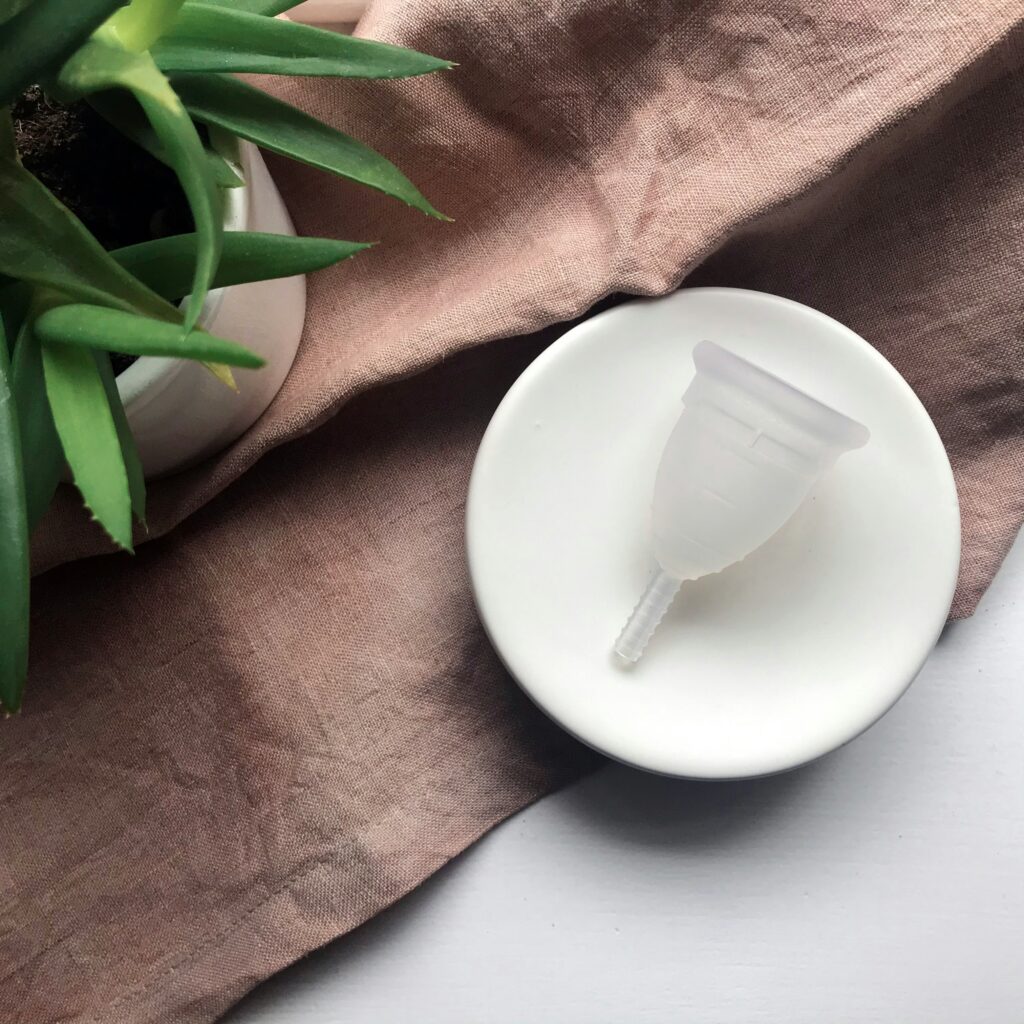Have you ever wondered about what sustainable period care products are out there? Worldwide, people are increasingly thinking about the connection between menstruation and sustainability. By opting for sustainable menstrual products, we can contribute to a better future while also prioritising health and comfort.
The most widely used menstrual products are disposable, non-biodegradable pads and tampons. They are convenient, relatively easy to find, and often the most financially accessible options (in the short term). As these products tend to be non-biodegradable, they can have a significant environmental footprint. Disposable period products are usually made from a combination of plastic, synthetic fibres, and other non-biodegradable materials,which contributes to landfill waste and can take years to break down, releasing harmful microplastics into the environment in the process. Additionally, the production of these products and their packaging involves resource-intensive processes, including the use of water, energy, and chemicals. The transportation of these products to stores also contributes to carbon emissions.
Fortunately, there is a growing array of eco-friendly menstrual product options that align with sustainability goals. Besides biodegradable tampons and pads, which have a smaller environmental impact than non-biodegradable products, the main options for a more sustainable period are reusable products. Some of these include:
- Menstrual Cups and Discs: Made from medical-grade silicone or latex-free rubber, which are inserted into the vagina to collect menstrual fluid. They can be used for several years with proper care, significantly reducing waste. They are small, light, and easy to carry.
- Reusable Cloth Pads: Cloth pads are washable and can be made from organic cotton, bamboo, or other sustainable fabrics. They come in various sizes and styles to accommodate different flow levels.
- Period Underwear: These are absorbent underwear with moisture-wicking layers. They are essentially washable underwear with a reusable cloth pad built-in.
Some Pros and Cons of Reusable Menstrual Products
Using reusable menstrual products comes with many benefits as well as a few challenges. Let’s explore these in detail:
Benefits
- Reduce Dependency: Reusable menstrual products eliminate the need to continuously re-purchase single-use products, which makes them an excellent option for remote areas.
- Cost-Effective: While the upfront cost of reusable eco-friendly products is higher, their reusability means long-term savings compared to the ongoing expense of disposable options.
- Healthier Choices: Many disposable products contain chemicals and synthetic materials that can cause skin irritation and other health concerns.
- Convenience: Reusable products can be worn for longer periods, reducing the need for frequent changes.
Challenges
- Learning Curve: Some reusable options, particularly menstrual cups, may require some practice and adjustment to find the most comfortable and effective way to use them.
- Initial Cost: While cost-effective in the long run, the prohibitive upfront price of some eco-friendly products is higher than disposable options, and thus not available to everyone.
- Maintenance: Reusable products need proper cleaning and care, which may not be feasible for everyone. They require access to clean water and a space to dry completely. Both of these difficulties are compounded by the stigma and silence surrounding menstruation in many societies, which makes people with periods have to hide their products. Improperly washing and drying reusable products, such as drying them in moist and dark environments to conceal them from view, can cause mould and other bacteria to grow. The maintenance of these reusable products may thus not be ideal for everyone’s situation.
If you think reusable products may be an option for you, here are a few tips and resources to help you make the switch!
Menstrual Cups
- Trouble picking the right size of cup? This online quiz by Put A Cup in It is a great ressource! (1).
- If you don’t have access to a place to boil your cup, in a pinch you can also wipe them with an alcohol pad and wash them thoroughly with unscented soap and water.
Save Some Money
- Use this link to see if your borough or city subsidises reusable menstrual products.
- These comparison charts for period underwear and for menstrual cups also have coupons!
- With a bit of extra time, access to a fabric store and some basic sewing skills, you can make your own reusable cloth pads at home!
Education and Conversation
- Maybe this is not the best time, financially, for you to invest in these products. In the meantime, you can still find out about the variety of options available. You can also open the conversation about menstruation and sustainability with those around you!
In sum, eco-friendly menstrual products offer a more sustainable alternative to other options, greatly reducing waste. While there may be a learning curve and some initial costs, the long-term benefits to us and the planet are substantial. By embracing these eco-friendly options, we can contribute to a more sustainable future.


